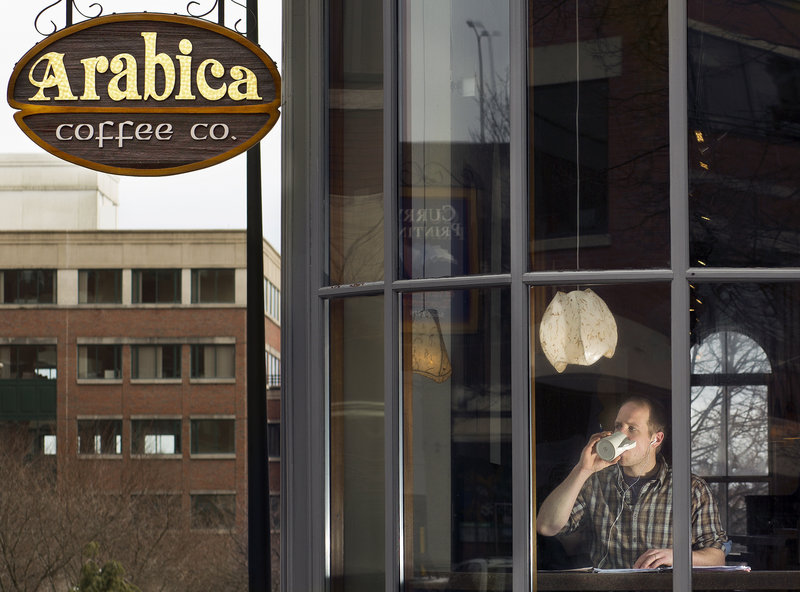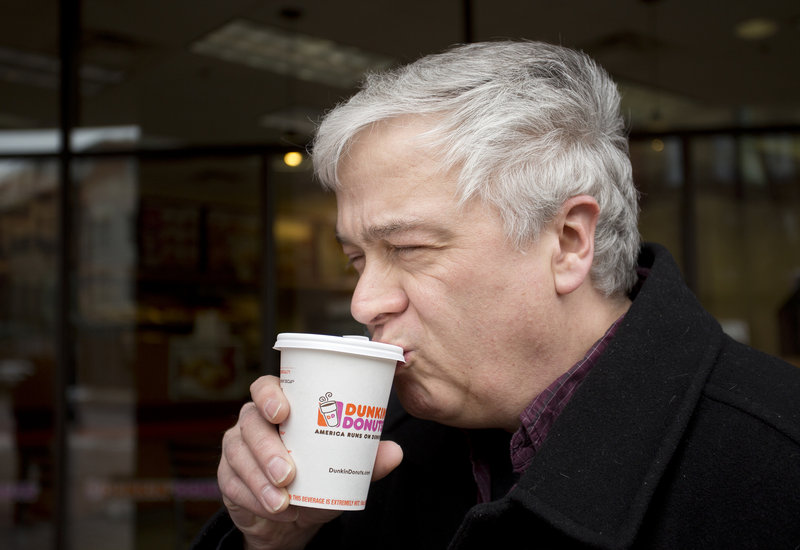Coffee tastes better in a Styrofoam cup.
Really?
Really, say some folks concerned about Portland’s proposed ban on Styrofoam containers. But is it a fact these folks can prove? Or is it all in their heads?
The answer, according to a trio of scientists with lots of initials after their names, is yes — and yes.
What most of us think of as the “taste” of something is really a combination of sensory reactions in our brain, says Gordon M. Shepherd, professor of neurobiology at the Yale School of Medicine in Connecticut and author of the book “Neurogastronomy: How The Brain Creates Flavor and Why It Matters.”
Shepherd says how a cup of coffee feels and looks affects your sense of how it tastes, as does the aroma, your past experiences with that cup, your cup-handling habits, and your expectations of all that cup might offer.
That’s not to say Styrofoam doesn’t add anything to coffee, because it can. Styrofoam is made from petrochemicals, and some of those can be “extracted” by hot coffee, said Mary Ellen Camire, professor of food science and human nutrition at the University of Maine in Orono.
Mmmmm, chemicals.
The question of why we taste what we taste was raised last week during public reaction to an impending city of Portland ban on the sale of food and beverages in Styrofoam containers. A group working to craft a city ordinance outlining the ban is scheduled to meet at 5 p.m. Monday in Room 24 at City Hall. Any ordinance would have to go to the full City Council for approval.
The ban would likely result in coffee sellers using paper cups instead of Styrofoam for a cup to go. Some coffee drinkers who heard about the coming ban proclaimed they preferred Styrofoam for coffee because it retains heat better and because paper cups make coffee taste differently.
But looking more closely at the science, and how our brains process taste, it’s likely folks who say coffee tastes better in Styrofoam cups have always had coffee in Styrofoam. Or at least have had very positive experiences with Styrofoam.
“When we’re judging the taste of something, we’re basing some of it on expectations, on what it looks like, what we’re familiar with. So if somebody has drunk from a Styrofoam cup their whole life and has liked the experience, to them the Styrofoam cup will probably taste better,” said Gary Beauchamp, director of the Monell Chemical Senses Center in Philadelphia, Pa., a research institute focusing on the science of taste and smell.
“They’ve learned that coffee in that kind of cup is something they’re going to like.”
So yes, a cup of coffee in Styrofoam can taste better to you than coffee in a paper cup, depending on your extensive personal history and personal preferences … and because people’s brains — after compiling all sorts of sensory data — are the final arbiter of what tastes good. So yes, it’s all in their heads.
Folks at three Portland coffee spots Friday confirmed that taste is a very personal matter, affected by a lot more than what goes in your mouth. In fact, of the half-dozen folks asked about the taste of coffee in a Styrofoam cup versus a paper one, most gave answers that had little to do with taste.
“I don’t like the Styrofoam because it keeps the coffee too hot and I can’t drink it right away. I have to order the coffee 20 minutes before I want to drink it,” said Isaac Turner, 33, a commercial photographer from Portland who now lives in Philadelphia, as he sat near the back of Arabica on Free Street. “When I order coffee, I usually needed it 10 minutes ago. But I don’t think the taste is any different.”
The idea that people’s past experiences and expectations affect taste seemed to fit the scenario described by Kevin Sturtevant of Portland, as he sat correcting papers near the front of Arabica on Friday.
“I really dislike the idea of Styrofoam intently, so I very rarely drink coffee from it. But when I have, it was because it was the only thing available and it was pretty crappy coffee,” said Sturtevant, 30, an English instructor at Southern Maine Community College.
While the science tells us taste is about a lot of different sensory experiences, Beauchamp says he knows of no studies that have been done about the way coffee tastes in a Styrofoam cup versus a paper one.
“I imagine if someone came to us and said this was a very important issue we’d probably study it, but so far I don’t think anyone has,” Beauchamp said.
Surprising, shocking really, when you think of how important a cup of joe is to your average Joe.
In fact, coffee is so important that some folks would likely drink it out of a boot as long as they can get it into their mouths. For them, a Styrofoam versus paper taste debate is irrelevant.
“I just love coffee so it doesn’t matter to me at all what cup it comes in, I’ll drink it,” said Maryellen O’Toole, a school nurse from Scarborough, as she carried a Styrofoam cup of coffee out of Dunkin’ Donuts at One City Center. “For water, I’m fussy, it has to be in a bottle.”
With coffee, the sense of smell probably has the second greatest impact on taste.
“When you swallow aromatic foods, the aroma goes up your throat to the back of your nose while you’re tasting it. All your tongue can measure is how sweet, sour, bitter or salty it is, so a lot of the taste comes from the smell,” said Camire, the UMaine professor.
That’s why people who have bad head colds say they can’t taste food anymore.
Of course, the container can add things to coffee you hadn’t planned on, even if you don’t necessarily taste them.
Styrofoam has chemical components called styrenes, which Camire says can leak when subjected to heat.
“I personally go for paper cups because plastics and Styrofoam both have material that can leak out into the beverage. And that doesn’t sound that good to me,” she said.
Staff Writer Ray Routhier can be contacted at 791-6454 or at:
rrouthier@pressherald.com
Send questions/comments to the editors.




